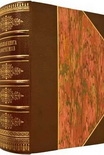Nature Noir Jordan Smith (book series for 12 year olds .TXT) 📖

- Author: Jordan Smith
Book online «Nature Noir Jordan Smith (book series for 12 year olds .TXT) 📖». Author Jordan Smith
All of us here felt that way at times. We rangers could have been guarding some jewel-like national park celebrated in expensive coffee-table books. Instead, we would spend years in these purgatory canyons up into the hills from Roberta, where our fellow creatures—black bears, pileated woodpeckers, foothill yellow-legged frogs, Sacramento squawfish, Sierra garter snakes, and pipevine swallow-tailed butterflies—were consigned neither to the heaven of a national park's perennial protection nor immediately to the cold hell of inundation.
Most days I just tried to live in the present. When the morning sun warmed the bark of the ponderosa pines in front of our ranger station and the trees filled the air with the scent of vanilla, it almost worked. At the bottom of the canyon the river still ran deep, cold, and clear as an angel's harp, and in late spring the does emerged from the surrounding woods with their new fawns to nibble at the lawn around our flagpole. They knew us as their protectors, for as any ranger will tell you, animals have an uncanny ability to discern the boundary of a park from the dangerous lands around it. And so you contented yourself with saving things, if not forever, for now. And you tried not to think about where you might have been had things been different, or where Roberta would send you next.
One day Roberta radioed Doug Bell at the ranger station, where he was catching up on reports. There was a ball game on the little clock radio over on MacGaff's desk, and Bell cocked his head slightly toward the announcer's lowered voice as Roberta's first call came in. The bases were loaded with two strikes, the announcer was killing time with a couple of quick statistics, and the pitcher was probably looking at the ground while fingering the ball and shuffling his cleats, then glancing up past the bill of his cap with a measuring gaze at the batter. Bell loved baseball. Each spring he'd take time off, put his wife and kids in his cabover camper, and drive down to Arizona to watch the Cactus League exhibition games.
Roberta's second call ran over the crack of the bat and the rising hiss of the crowd. Bell exhaled, kicked his squeaky swivel chair back from the perpetual disorder of his desk, and walked into the anteroom by the front door, where he leaned over the microphone on the receptionist's desk. Roberta gave him his marching orders—no one else piped up and volunteered—so Bell shambled through the screen door, across the shady porch, and down the concrete path to his pickup. He got in and slammed the door violently, started the truck, jammed it into reverse, chirped the tires, rattled down the driveway onto Highway 49, and turned left toward the river, where he was supposed to meet the victim of a Penal Code 245, an assault with a deadly weapon.
The road Bell followed wound down the wall of the North Fork into the bowl where the North and Middle Forks come together. That junction of two canyons and the need to cross the river where it was easiest had directed wanderers through the Confluence for a long time. At the end of the nineteenth century, a couple of local boys found a hole in the ground near there, which later afforded paleontologists a random sample of foot travelers since the Ice Age—the skeletons of extinct ground sloths, giant bison, saber-toothed cats, and prehistoric people who had fallen into the system of limestone caverns it let into. Before the Gold Rush, Indian trails came to the Confluence from various directions, and a Nisenan village called Chulku had stood there. When the miners finished with it, nothing remained of Chulku but twenty-four mortar holes chipped into a bedrock outcrop by the river, where the inhabitants had ground acorns into their staple meal.
After the Gold Rush, wagon roads had replaced footpaths. As Bell reached the river, the yellow gores of the old roads' switchbacks were visible against the gray-green forests on the canyon walls above him. In front of him, the abutments of generations of bridges littered the banks where floods had left them. The concrete deck of one bridge, from the flood of 1964, lay in the water. Three others remained standing—two for roads, one for a railroad, now abandoned—and high above, a fourth, the new Foresthill, arched across the sky.
From the Confluence in the early 1970s you could watch the two ends of the New Foresthill Bridge grow out from either side of the gorge. As cranes lowered steel to the ironworkers on the two tips, they arched out over the canyon, then down to alight briefly on two towering concrete pylons, and then out again for over 800 feet to join over the river. When the structure was completed in 1973, its twin lanes of pavement ran 2,428 feet along the top of its three arched trusses, so far above the river in the middle that the Washington Monument could have stood upright beneath the bridge with enough room left over to fly a large helicopter between the two.
The featured speaker at the dedication ceremonies that September was Congressman Harold "Bizz" Johnson, an enthusiastic supporter of public works in general and these in particular. He was said to have marked up the House bill authorizing the Auburn Dam—and thus this bridge—over drinks with a local banker and the publisher of the Auburn Journal in an Auburn bar called, of all things, the Sierra Club. When he finished speaking, the ribbon was cut as a donkey and an elephant





Comments (0)